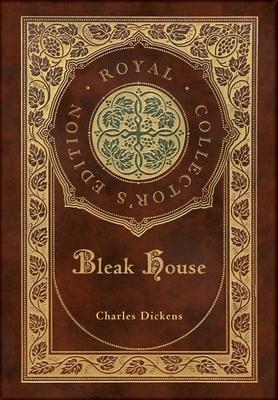Bleak House is told partly by the novel's heroine, Esther Summerson, and partly by an omniscient narrator. At the centre of Bleak House is a long-running legal case in the Court of Chancery, Jarndyce and Jarndyce, which came about because a testator wrote several conflicting wills.
Dickens claimed there were many actual precedents for his fictional case. One such was probably the Thellusson v Woodford case in which a will read in 1797 was contested and not determined until 1859. Though the legal profession criticised Dickens's satire as exaggerated, this novel helped support a judicial reform movement which culminated in the enactment of legal reform in the 1870s.
This case laminate collector's edition includes a Victorian inspired dust-jacket.
